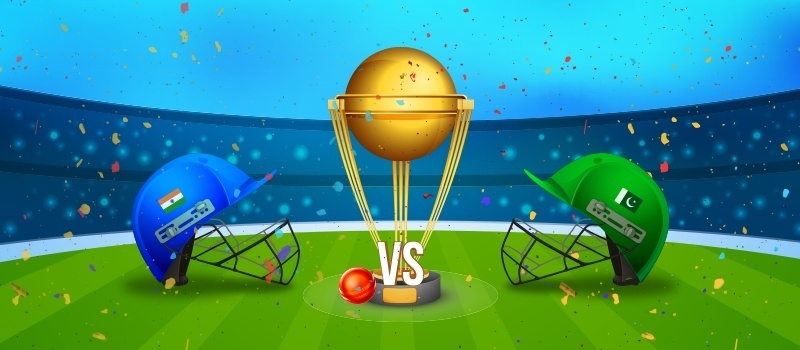Great events create earth-shattering noise, let alone the suspense, thrill and excitement that they create even before the start. And the one-of-its-kind, India-Pakistan World Cup humdinger, is just about to cast the hold-your-breath, test-of-nerve spell on cricket lovers across continents. With the gap closing in on the day of reckoning, expectancy is the fuel keeping this pot boiling.
On the one side are the presentiment and prediction, as to the team that is going to emerge victorious, and on the other is the actual result of the India-Pakistan World Cup match waiting to unfold. Which brings us to the moot question of what needs to be done to ensure that the twain shall meet.
Can Machine Learning Lift the Lid on India-Pakistan World Cup Humdinger?
Without putting a damper on the aura of suspense surrounding this electrifying event, infusing machine learning mechanics into this event is about putting a ring of positivity into unveiling the winner and making certain that accurate prediction of the India-Pakistan winner can turn out to be real in the end.
Going granular, beyond historical data
Though historical data pertaining to the encounters between India-Pakistan turn into an important feed for the machine learning algorithms, going granular can help improve the accuracy of prediction. As the granular data dive begins, there is increased intensity to nail down factors that may in some way influence the outcome of the India-Pakistan World Cup.
Delving deep into feature extraction
From the ground up, what becomes strikingly familiar are the team features as well as player features. Features from team’s perspective encompass a wide variety – from the bowling average, batting average and win percentage to bowling strike rate and bating strike rate.
And looking into player features, what becomes pertinent are top performing bowlers, top performing batsmen and all-rounders and key performances of players.
As we foray into contextual information, it is pertinently relevant to look at features like weather, pitch, and the venue. Other factors that can influence the prediction outcome of the India-Pakistan World Cup match include some salient features of the game – toss winner, power play, toss decision, run rate, runs scored economy rate and the usual scores of batsmen against opposition and wickets claimed by bowlers.
‘More granular the data is, more accurate the prediction becomes’ is all the spark needed to fish further for anything and everything that can impact the prediction outcomes. This could take the form of features like the margin of victory, key features of tight-finish world cup games between the teams, victories achieved by playing first or while chasing, team make-up for world cup encounters, bowling depth gauged by the variety, batting depth in terms of hard-hitting ability and strike-rotating capacity – this far-reaching efforts to capture features helps in enhancing the granularity while it also increases the complexity.
Apart from looking at the India-Pakistan humdingers, it is worth considering how the recent outings of the two teams, results and performance in those outings can impact the prediction of winner in this event.
And does the granularity bring in ball-by-ball details pertaining to all the encounters as well as the advantage that a team scores over the other at a specific venue for the encounter?
Getting the most from feature engineering
Feature selection becomes critical in coming up with the bang-on-target prediction of the outcome. Tapping into cricket-expertise is also about stretching our imaginations to grasp at the least of features influencing the prediction outcome in the India-Pakistan world cup 2019 encounter. Though an exhaustive feature list in place, focus turns towards features that produce a telling impact on the prediction outcomes and features that can sync well with the ML model.
Seeing it as a classification or a regression problem
It all starts with data, for using appropriate machine learning model – be it Logistic Regression, Decision Tree, SVM, Random Forest or Naïve Bayes – that can help in accurate prediction of the winner in the India – Pakistan World Cup 2019 Match depends on the datasets collated to enable prediction.
The India – Pakistan World Cup 2019 Match winner prediction can move away from the boundaries of classification when there are strings attached to the winner prediction – strings by way of acquiring intelligence regarding ‘winning margin’ or in the form of ‘won by so many wickets’ or ‘player instrumental for the win’ or other such intelligence sought along with the winner prediction in the India – Pakistan World Cup 2019 encounter.
And as we close in on data, features and the ML model to predict the winner of the India-Pakistan world cup 2019 match, what’s ingratiatingly apparent is that there are just three plots to this The India – Pakistan World Cup 2019 tale – A win by India, A win by Pakistan or a tie.
Voila, and with such high-voltage cricketing stuff holding cricket lovers on tenterhooks, arguably, it is the game of Cricket that wins.





